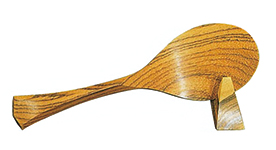Miyajima-zaiku(rokuro zaiku, Miyajima-bori and Miyajima shakushi) [Traditional Crafts designated by the Minister of Economy, Trade and Industry]Miyajima-zaiku Cooperative
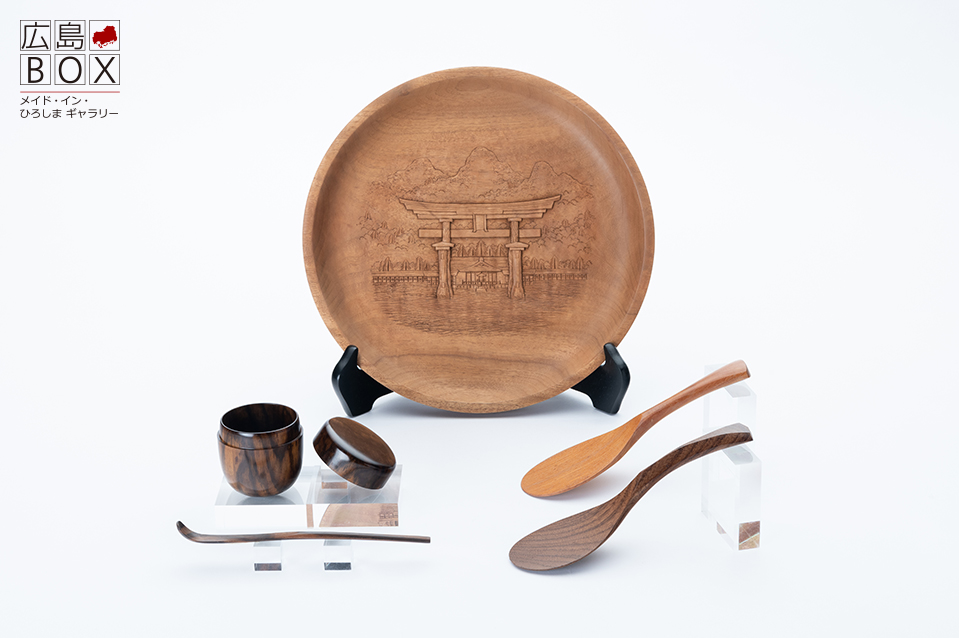
| Exhibitor (Manufacturer) | Miyajima-zaiku Cooperative |
|---|---|
| Address | 1165-9 Miyajima-cho, Hatsukaichi City, Hiroshima |
| TEL | (0829)44-1758 |
| Established | November 1st, 1982 |
| Job description | Manufacture and sales of Miyajima carvings |
| Website | http://miyajimazaiku.com/english/ |
Miyajima-zaiku originates from the techniques used by carpenters working on the restoration of Itsukushima Shrine in the Kamakura period (1185-1333). In subsequent years, the development of potter’s wheel crafts and engraving during the Kaei Era (1848-1855) raised it to the level of an art form, and Miyajima-zaiku was officially recognized as a traditional craft in 1982.
Miyajima-rokuro zaiku (potter’s wheel crafts)
Miyajima-rokuro zaiku is built on a tradition of making the best of the inherent nature of wood, which is widely used to make practical items such as round trays, containers for sweets, saucers and natsume (green tea containers). It is considered the finest woodworking technique in Japan that utilizes the beauty of wood grains, creating items with an elegance that grows as the wood ages.
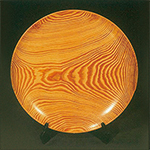
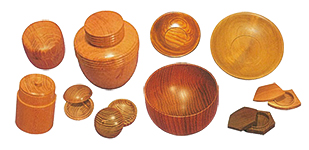
Miyajima-bori (wood carving)
Hagii Shosai, a sculptor from Koshu (present day Yamanashi prefecture), brought these wood carving techniques to Miyajima at the end of the Edo period (1603-1868).
The two major techniques of Miyajima-bori are uki-bori (relief), which is used to carve flowers and birds that appear to be three-dimensional, and shizume-bori (sunk carving), which is used to carve large shrine gates under the wooden base. These techniques are known for their distinctive character, which continues to be expressed with the passing of time.

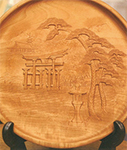
Miyajima shakushi (Miyajima dipper)
Miyajima shakushi have their origins in the Kansei period (1789-1801). The methods used to manufacture these dippers were introduced by Seishin, an ascetic monk who resettled in Miyajima, and they became a local specialty. In addition to the selection of materials, the ingenuity of the manufacturing techniques used and the elegance of their shape, Miyajima shakushi are notable for the fact that they have no odor and rice grains do not stick to them.
